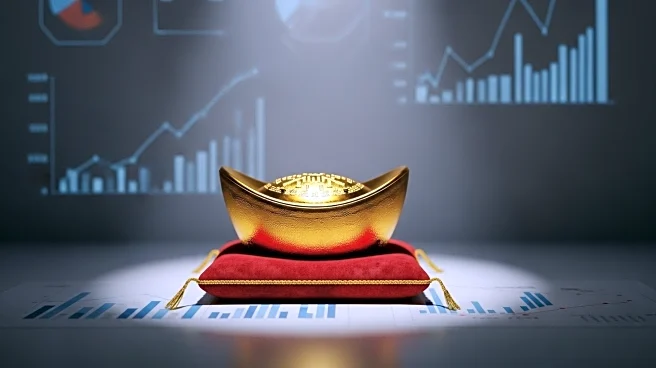What is the story about?
What's Happening?
Gold prices have reached a record high, driven by expectations of further U.S. interest rate cuts and a weakening dollar. Investors are closely watching Federal Reserve Chair Jerome Powell's upcoming speech for signals on the central bank's policy direction. The recent rate cut by the Fed has fueled speculation of additional reductions, contributing to the surge in gold prices. Spot gold and gold futures have both seen significant increases, reflecting investor sentiment and market dynamics.
Why It's Important?
The rise in gold prices highlights the impact of monetary policy on commodity markets. Gold is often seen as a safe haven asset, attracting investors during times of economic uncertainty. The anticipation of further rate cuts and a weaker dollar has bolstered gold's appeal, influencing investment strategies and market behavior. The surge in gold prices also reflects broader concerns about inflation and economic stability, with implications for financial markets and global trade.
What's Next?
Investors are awaiting further signals from the Federal Reserve regarding its policy direction. Powell's speech is expected to provide insights into the central bank's approach to interest rates and inflation. The upcoming release of the personal consumption expenditures (PCE) index will offer additional data on inflationary pressures, influencing market expectations and investment decisions. Stakeholders are closely monitoring these developments to assess their impact on gold prices and broader economic trends.
Beyond the Headlines
The surge in gold prices underscores the broader economic uncertainties facing the U.S., including the impact of global trade tensions and domestic policy shifts. The Fed's actions are part of a complex interplay between monetary policy, fiscal policy, and market dynamics, with long-term implications for economic stability and growth. The ongoing debate over interest rate policies reflects broader concerns about economic resilience and the potential for stagflation.
AI Generated Content
Do you find this article useful?














